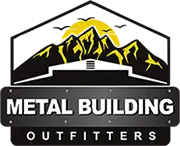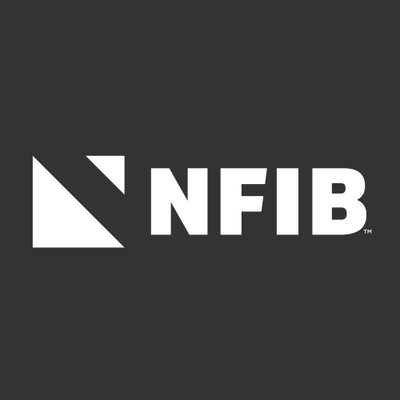
Contents
When it comes to addressing budget constraints in metal structures, exploring cost-effective engineering solutions becomes paramount. By delving into creative design techniques and material applications, you can open up a world of possibilities that balance affordability with quality outcomes. Are you curious to uncover how these approaches can transform your construction projects and elevate your efficiency?
Key Takeaways
- Optimize material selection for cost efficiency and sustainability.
- Implement efficient HVAC systems to reduce operational expenses.
- Integrate insulation solutions for energy savings and thermal performance.
- Utilize streamlined manufacturing processes for cost-effective production.
- Value engineering principles for budget-friendly metal structure build.
Structural Analysis and Design Considerations
When analyzing metal structures, it’s important to examine various design factors to safeguard structural integrity and safety. Seismic analysis plays a significant role in ensuring that the structure can withstand the forces of an earthquake. By evaluating the potential impact of seismic activity on the metal structure, engineers can implement measures to enhance its resilience and protect occupants.
Design efficiency is another key aspect to consider when working on metal structures. It involves maximizing the structure’s performance while minimizing material usage and construction costs. Environmentally friendly construction practices should also be integrated into the design process to reduce the project’s environmental impact. By incorporating energy-efficient systems and using eco-conscious materials, the overall sustainability of the structure can be improved.
Budget considerations, including those involving metal structures, are paramount in any construction project. Engineers must strike a balance between design aspirations and financial limitations to ensure the project remains economically feasible. By carefully evaluating the costs associated with different design options and construction techniques, the budget can be optimized without compromising the quality or safety of the structure.
Ultimately, a thorough analysis of design efficiency, seismic considerations, eco-friendly construction practices, and budget constraints is essential for the successful completion of a metal structure project.
Efficient Material Selection for Cost Savings
When considering efficient material selection for cost savings in metal structures, it’s crucial to focus on ideal material choices and cost-effective selection strategies.
By carefully analyzing your project’s specific requirements and comparing the properties of different materials, you can identify the most suitable options to minimize expenses while maintaining structural integrity.
Implementing a systematic approach to material selection based on performance, durability, and cost can lead to significant savings in the long run.
Optimal Material Choices
Selecting the most suitable materials is significant in achieving cost savings and efficiency in metal structure engineering. Best material choices can provide sustainability benefits while offering cost-effective options. When considering the environmental impact, it is vital to choose cost-efficient solutions that align with both budget constraints and ecological concerns. By carefully choosing materials that balance durability, strength, and cost, engineers can create structures that are not just economically viable but also environmentally responsible.
| Material Type | Sustainability Benefits |
|---|---|
| Recycled Steel | Reduced Carbon Footprint |
| Aluminum | Energy Efficiency |
| Timber | Renewable Resource |
| Composite Materials | Lightweight Design |
| Galvanized Steel | Corrosion Resistance |
Cost-Effective Selection Strategies
How can engineers strategically enhance material selection to achieve cost savings in metal structure engineering?
When considering cost-effective selection strategies, it’s pivotal to begin with a clear budget allocation plan. By understanding the financial constraints, engineers can prioritize materials that offer the best value while meeting project requirements.
Resource optimization plays an essential role in achieving cost savings. This involves evaluating the available resources and selecting materials that maximize efficiency without compromising structural integrity.
Conduct thorough research on material properties, durability, and performance under various conditions to enhance material selection for cost-effectiveness. Engineers can make informed decisions that align with budget constraints by comparing different material options based on their cost-benefit analysis.
Additionally, considering the life cycle cost of materials can provide insights into long-term savings and maintenance requirements.
Optimizing Foundation Design for the Economy
When optimizing foundation design for the economy, consider cost-effective solutions that prioritize efficient load distribution and budget-friendly material selection.
By focusing on these key points, you can ensure that your metal structure’s foundation isn’t just structurally sound but also economically feasible.
Implementing these strategies will help you balance performance and cost savings in your engineering projects.
Cost-Effective Foundation Solutions
Optimizing foundation design for cost-effectiveness involves analyzing soil conditions, load requirements, and construction methods to achieve efficient structural support. Earthwork considerations play a pivotal role in determining the most suitable foundation type for a metal structure. By evaluating the soil’s bearing capacity and settlement characteristics, cost-effective alternatives can be explored, such as shallow foundations for stable soils or deep foundations for weak soil conditions.
Incorporating eco-friendly options into foundation optimization can further enhance the economic viability of the project. Utilizing materials like recycled aggregates or implementing creative foundation designs that reduce environmental impact can both align with sustainability goals and reduce long-term costs.
Additionally, considering the long-term performance and maintenance requirements of the foundation system during the design phase can lead to significant cost savings over the structure’s lifespan.
Efficient Load Distribution
Efficient load distribution in foundation design is important in maximizing structural stability while minimizing construction costs. Through meticulous load distribution analysis, engineers can achieve structural efficiency by optimizing how loads are transferred to the foundation.
By strategically placing support elements and designing the foundation layout to distribute loads evenly, economical structural solutions can be realized without compromising stability.
Load distribution analysis involves evaluating the magnitude and direction of forces acting on the structure to determine the most efficient way to transfer these loads to the foundation. This process allows for load optimization, ensuring that each component of the foundation is utilized effectively to support the structure while minimizing material usage and construction expenses.
Budget-Friendly Material Selection
How can foundation design be strategically improved to ensure cost-effectiveness without compromising structural integrity?
When selecting materials for foundations, prioritizing durability and cost-effectiveness is essential. Opt for materials that offer a balance between longevity and affordability. Concrete, for instance, is a popular choice due to its durability and relatively low cost. Additionally, alternative materials like recycled aggregates or fly ash should be considered to reduce expenses without sacrificing quality.
Construction efficiency plays a critical role in optimizing foundation design for the economy. Prefabricated elements, such as precast concrete piles, can expedite the construction process, leading to cost savings. Choosing standardized sizing for materials can also streamline construction, minimizing waste and reducing overall expenses.
Energy-Efficient HVAC Systems Integration
Integrating energy-efficient HVAC systems into metal structures demands careful planning and precise engineering to maximize performance and eco-friendliness. Energy-efficient ventilation is a vital component in achieving a sustainable HVAC system integration. By strategically situating vents and utilizing efficient fans, airflow within the metal structure can be enhanced, ensuring proper air distribution and reducing energy waste.
Cost-effective HVAC solutions play an essential role in realizing sustainability strategies for metal structures. Implementing energy-efficient equipment such as high-efficiency heat pumps, variable refrigerant flow systems, and programmable thermostats can significantly decrease energy consumption while maintaining optimal indoor comfort levels. Furthermore, integrating smart controls and automation features can further improve the system’s efficiency by adjusting settings based on occupancy and external environmental conditions.
System integration is pivotal to maximizing the efficiency of HVAC systems in metal structures. By smoothly integrating heating, ventilation, and air conditioning components, engineers can ensure that the system operates seamlessly to minimize energy usage and lower operational costs. Proper insulation and sealing of ductwork are also crucial to prevent energy loss and sustain indoor air quality.
Cost-Effective Insulation Solutions
To enhance energy efficiency and maintain indoor comfort levels in metal structures, cost-effective insulation solutions are critical in reducing heat transfer and minimizing energy loss. Proper insulation strategies can lead to significant energy savings and improve the overall thermal performance of the building.
When considering cost-effective insulation solutions for metal structures, various options must be evaluated based on their thermal performance and affordability. Materials such as fiberglass, foam board, or reflective insulation can provide effective thermal resistance while remaining budget-friendly.
| Insulation Material | Thermal Performance |
|---|---|
| Fiberglass | High |
| Foam Board | Moderate |
| Reflective Insulation | Low |
Fiberglass insulation offers high thermal performance at a reasonable cost, making it a popular choice for metal structures. Foam board insulation provides moderate thermal resistance and can be a good compromise between performance and affordability. Reflective insulation, although offering lower thermal performance, can still contribute to reducing heat transfer in certain applications.
Streamlined Manufacturing Processes
Efficiently optimizing manufacturing processes is essential for enhancing productivity and reducing costs in the production of metal structures. It’s vital to implement manufacturing automation and harness technological advancements to achieve this goal.
Streamlining manufacturing processes can greatly enhance production efficiency and contribute to cost reduction. Below are five key strategies to explore for streamlining manufacturing processes in the production of metal structures:
Implementing Robotics: Introducing robots in the manufacturing process can automate repetitive tasks, leading to increased efficiency and precision.
Utilizing 3D Printing Technologies: Incorporating 3D printing can transform the production process by enabling rapid prototyping and customization.
Integrating IoT Solutions: Harnessing Internet of Things (IoT) devices can improve connectivity and data collection, optimizing the production flow.
Adopting Lean Manufacturing Principles: Implementing lean practices can eliminate waste and streamline operations, improving overall efficiency.
Investing in Advanced CNC Machining: Upgrading to advanced Computer Numerical Control (CNC) machines can improve accuracy and speed in metal fabrication processes.
Value Engineering for Budget-Friendly Builds
Value engineering is a systematic and methodical approach to analyzing the functions of metal structures to achieve cost savings without sacrificing quality or performance. When considering budget-friendly builds, implementing value engineering techniques becomes essential. By focusing on cost-effective construction methods and budget-friendly design solutions, you can enhance the overall project expenses without compromising the integrity of the structure.
One of the key value engineering techniques for budget-friendly builds is the utilization of standardized components. By using mass-produced prefabricated elements, you can benefit from reduced material costs and streamlined construction processes. Additionally, incorporating modular design concepts can further enhance efficiency and minimize labor expenses.
Another effective strategy is to prioritize material selection based on both cost and performance criteria. By carefully evaluating different materials and their suitability for the project requirements, you can identify opportunities to achieve significant cost savings without compromising structural integrity. Additionally, exploring cutting-edge construction techniques such as building information modeling (BIM) can help optimize resource utilization and enhance project coordination.
Summary
You’ve mastered the art of affordable engineering solutions for metal structures. You’ve turned construction into a budget-friendly masterpiece with your keen eye for cost-effective design, efficient material selection, and streamlined processes.
Keep up the good work, and continue to bring value and quality to your projects. You’re a true engineering wizard!
Recent Posts
What Are Your Options for Agricultural Metal Storage?
When you’re exploring agricultural metal storage options, it’s crucial to take into account the various
How to Choose Versatile Agricultural Metal Structures
When you’re considering versatile agricultural metal structures, it’s essential to start by evaluating your specific
Analyzing Costs of Custom Metal Buildings: A Guide
When it comes to custom metal buildings, costs can be like a puzzle waiting to


